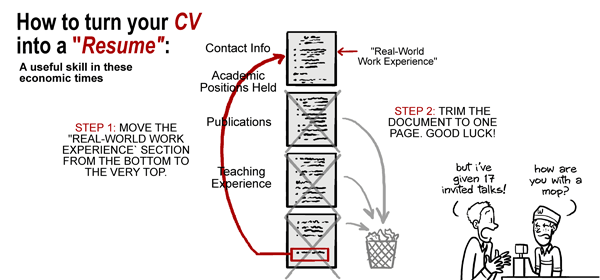We now return to one of our regular features, “Let’s impugn all the bloggers.” Let’s start with Geoffrey North, using the pulpit of
Current Biology.
But there is also, I think, a danger here, which lies in the very speed of response, and the way that blogs are essentially “vanity publications” which lack the constraints of more conventional publishing — they are not reviewed, and do not even have to pass the critical eye of any editor.
North is not alone. Fred Schram, the
Journal of Crustacean Biology editor, recently wrote much the same, as a closing note in a piece mostly about open access (albeit in a
society newsletter rather than an editorial in the journal itself):
One can already see what lies down the road beyond that point, something truly (open access) – the blogosphere! But do we want to collect our scholarly information by monitoring personal blogs. There will be no peer review, no quality control of data presentation, no fixed PDFs, no assurance that what we read represents actual work has been done as claimed.

What strikes me about both North’s and Schram’s comments is they reflect a desire for there to be a
back room. You know, the place where work gets done, out of sight. Then, after all the real deals are made, a glossy
fait accompli version that lacks blemishes is presented for “the official record.”
There’s a reason that people don’t like back room dealings. It shuts people out. There’s no transparency. David Brin has often noted that we tend to demand transparency for everyone else, but privacy for ourselves.
Blogs have allowed a bunch of scientists who don’t often get invited into the back room to start commenting on what comes out of it. It’s no surprise that those in the back room, unused to the glare, might hate this.
These arguments also seem weird to me in emphasizing “
the scientific record.” While vetting and quality control are good things, they have
hardly produced a pristine “scientific record” (see
Retraction Watch). It’s
always been messy.
North continues:
I do think there are dangers in a world where the critics are less accountable than in the more “traditional” system of peer-reviewed journals (which I well appreciate can be frustratingly slow in processing critical feedback).
How are journals, and their editors, more accountable than “critics”? It seems that more often than not, getting even
egregious abuses of editorial power corrected is like pulling teeth. The arsenic life paper has been discredited, but not retracted, and there has never been any explanation of how the paper passed peer review. A weak paper claiming genetically modified corn caused cancer in rats
rated responses, but not retraction, and there was never any explanation of how the paper passed peer review. An investigative journalist had to be the one to
hold the feet of The Lancet and its editor, Richard Horton, to the fire after Andrew Wakefield’s untrue anti-vaccine paper was published. Editors can just say of problematic papers, “This passed peer review. Peer review is anonymous, so we can’t tell you anything about who the reviewers were or what they said.” This is a strange version of accountability.
Many journals have no “letters to the editor” section, or comments, or anything similar. And even if a journal does have such a section, who decides what is fit to see print? The self-same editors. Direct critiques of journal editorial processes in the same journals, or even different journals have been, in my estimation, rare. I am trying to think of examples. If anyone has them, please add them to the comments.
Journal editors may have a skewed view of this issue, given that they
alone have an overview of the entire editorial process. Nobody else does. Everyone else is kept at least partially in the dark, deliberately so. Authors generally don’t know who reviewers are. Reviewers don’t communicate with each other. And none of them have much opportunity to have a dialogue with the editor.
North asks:
What is the solution here? How can one have a system that allows for rapid critical assessment, but ensures any such criticism is fair and reasonably based, not based on misunderstanding or ill-motivated?
Everything that North concern trolls about the blogosphere has
always been happening at scientific conferences. And yet somehow, scientific discourse does not collapse at conferences. Nobody there talks about the need for “solutions” for the problems of criticisms at conferences.
We’ve been down this road before. Here’s a small sample taste of how
the authors of a review in BioEssays dismissed Rosie Redfield (and anything else that might be on the Internet) blogging about on arsenic life:
(T)hese “chat room” environments are not constrained or screened and at times become ad hominem attacks, which have no place in the scientific literature.
Let us not forget that a
representative of the American Chemical Society said this of bloggers:
“We find little constructive dialogue can be had on blogs and other listservs where logic, balance, and common courtesy are not practiced and observed,” Glenn S. Ruskin, the group’s director of public affairs, said in an e-mail message.
We had L. Henry Edmunds, Jr., the editor of the
Annals of Thoracic Surgery, ranting against “bloggists”,
telling Retraction Watch:
It’s none of your damn business.
I’m grateful to Embargo Watch for
recording the reaction of the public information officer of a major university, the University of Manchester’s Aeron Haworth, brushing off Ed Yong (who told this story on the now defunct Posterous website):
I think you have all you need for a blog.
Common factors in all of these? For one, most have vested interests in the
status quo of scholarly publishing: editors, society representatives, and so on. Large institutions used to be able to control attention because of the vast infrastructure needed to reach a mass audience. They are now freaking out that their infrastructure doesn’t mean that much. They face competition from people like bloggers who gain attention by doing remarkable things.
As Christie Wilcox
pointed out, North’s article does not give any examples of where something bad happened. Not
one. Not a single, solitary case where bloggers resulted in some poor scientists unfairly being tarnished. In contrast, North provides a positive example of where blogging had a good effect (Rosie Redfield’s critique of arsenic life).
Here’s my challenge: instead of jumping to “The Internet is
bad” meme with both feet, instead of just bemoaning the blogs are bad, point some fingers. Name some names. Be specific about events that unfolded in ways harmful to the general scientific community, and not just things that make journals look bad.
Previously, I said nobody can
assert they have authority. I’d like to note that the flip side is also true: you cannot dismiss authority, either. When editors and journals try to claim
they have authority and bloggers
don’t, they lose the very thing they want to have.
Hat tip to Malcolm M. Campbell, who
asked for blogger’s response to this editorial.
Additional:
Matthew Francis and
Justin Kinney both counter the fetishization of journal peer review evidenced above by pointing out the success of arXiv.
I also became aware of PubPeer through this article, and
reposted this piece there.
References
North G. 2013. Social media likes and dislikes. Current Biology 23(11): R461. DOI: 10.1016/j.cub.2013.04.073;
free full text
Schram F. 2013. To be open or not to be open: That is the question.
The Ecdysiast 32(1): 7.
http://www.thecrustaceansociety.org/uploads/Ecdysiast_32-1_May_2013.pdf
Related posts
Wrong approach
Arsenic life, four months later: pay no attention to the internet
Arsenic life, four months (and a bit) later: Reviewers with shovels
The deal is rotten
Dear Virginia
Taxonomists as science survivalists
Retraction classic: physics and feminism
External links
On Current Biology
editorial
On The Danger Posed By Non-Expert Critiques Published To Large Audiences
Speak up and matter
Others
ACS to bloggers: Shove it
Why was that paper retracted? Editor to Retraction Watch: “It’s none of your damn business”
How to demonstrate you’re not about transparency — and piss off reporters — as a PIO
Picture by by LALLA - ALI on Flickr; used under a Creative Commons license.
 But base load power generation has problems. They put lots of carbon dioxide in the atmosphere (e.g. coal), or depend on unevenly distributed resources that are difficult to transport and require expensive initial outlays (e.g., nuclear). And despite these problems, we can’t seem to get off these, particularly fossil fuels. So we get projects like the Keystone XL pipeline project and mountaintop removal mining.
But base load power generation has problems. They put lots of carbon dioxide in the atmosphere (e.g. coal), or depend on unevenly distributed resources that are difficult to transport and require expensive initial outlays (e.g., nuclear). And despite these problems, we can’t seem to get off these, particularly fossil fuels. So we get projects like the Keystone XL pipeline project and mountaintop removal mining.




































.jpg)









